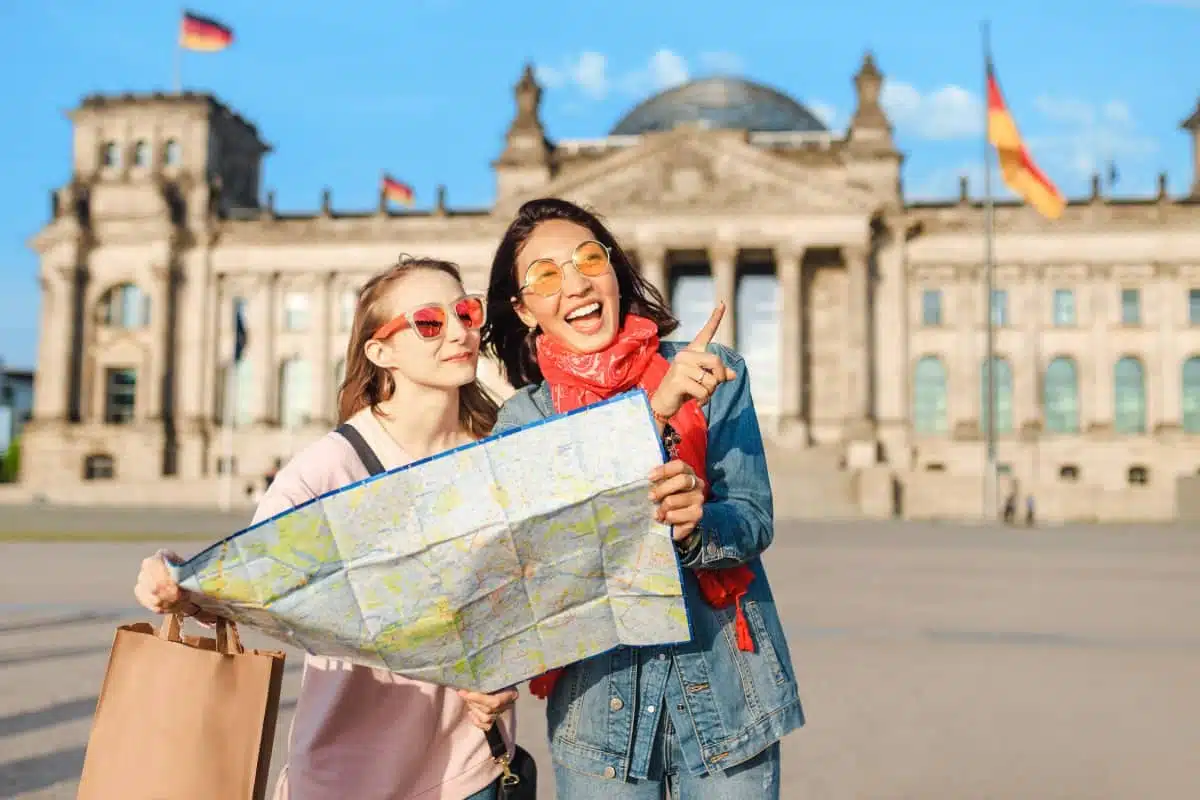Berlin, Germany’s capital, is a city where history and modern culture converge in a vibrant tapestry spanning centuries. From the remnants of the Berlin Wall that once divided the city to the bustling contemporary art scene that has claimed its place in the urban landscape, Berlin offers a unique journey through time. The city’s architecture tells stories of grandeur, devastation, division, and rebirth, while its cultural institutions, from museums to galleries and theaters, showcase the creative energy that has long defined Berlin.
A City Guide to Berlin, Germany, explores key destinations within Berlin, providing insights into each location’s historical significance and contemporary appeal, along with practical advice for visitors. Whether you’re drawn to Berlin by its historical significance or its hub of innovation and art status, the city promises a rich array of experiences.
1. The Berlin Wall and the East Side Gallery

Image Credit: Shutterstock / Christo Georgiev
The Berlin Wall, once a symbol of division during the Cold War, now proudly showcases resilience and unity. The longest remaining section, known as the East Side Gallery, is adorned with murals painted by artists from around the world, transforming the wall into one of the largest open-air galleries globally. This historic monument stretches for 1.3 kilometers along the Mühlenstraße in Friedrichshain-Kreuzberg and features over 100 paintings that reflect themes of freedom, peace, and political commentary. The East Side Gallery serves as a poignant reminder of Berlin’s past and a canvas for artistic expression and international solidarity.
Insider’s Tip: Visit early in the morning to avoid crowds and have unobstructed views of the artwork. For deeper insights, consider joining a guided tour that explains the historical context and stories behind the murals.
When to Travel: Berlin can be visited year-round, but the spring (April to June) and fall (September to November) offer mild weather, ideal for outdoor activities like exploring the East Side Gallery.
How to Get There: The East Side Gallery is accessible via public transport, with the Warschauer Straße S-Bahn and U-Bahn stations being the closest stops. Buses also run nearby, making it easy to include in any Berlin itinerary.
2. Checkpoint Charlie
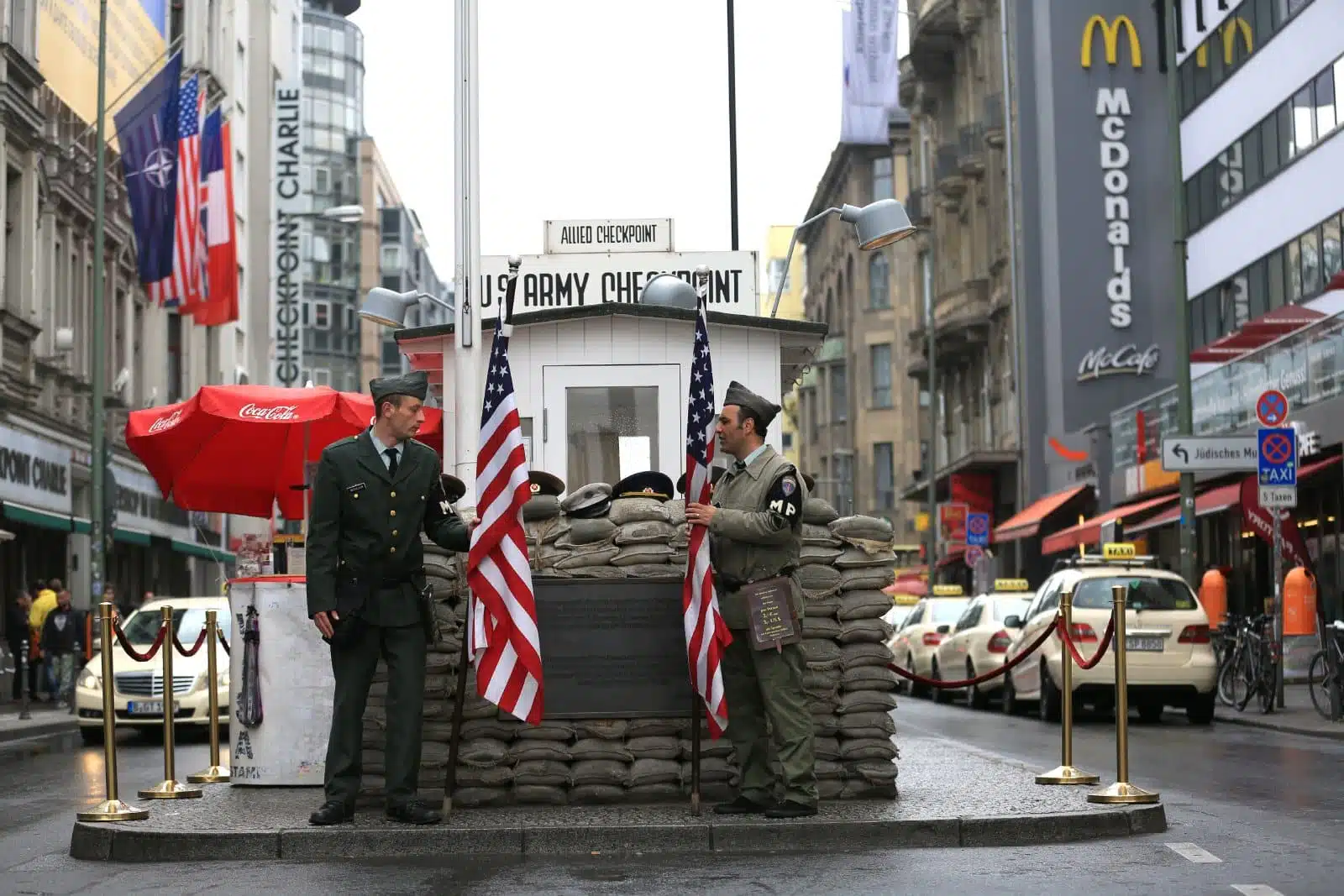
Image Credit: Shutterstock / bodrumsurf
Checkpoint Charlie was the most famous crossing point between East and West Berlin during the Cold War. Today, it is a powerful symbol of the city’s divided history, attracting visitors with its reconstructed guardhouse and the nearby Mauermuseum. The museum offers an in-depth look at the Berlin Wall’s history and the many successful and tragic escape attempts that occurred here. While the area around Checkpoint Charlie has become somewhat commercialized, the site remains a must-visit for those interested in understanding the complexities of Berlin’s past.
Insider’s Tip: For a more authentic experience, visit the BlackBox Cold War museum a short walk from Checkpoint Charlie. It provides a comprehensive overview of the Cold War era without the crowds.
When to Travel: Checkpoint Charlie can be visited throughout the year, but visiting outside of peak tourist season (July and August) can provide a more contemplative experience.
How to Get There: Checkpoint Charlie is centrally located and easily reached by U-Bahn, with Kochstraße/Checkpoint Charlie station being the nearest stop. Several bus lines also serve the area.
3. Contemporary Art Scene
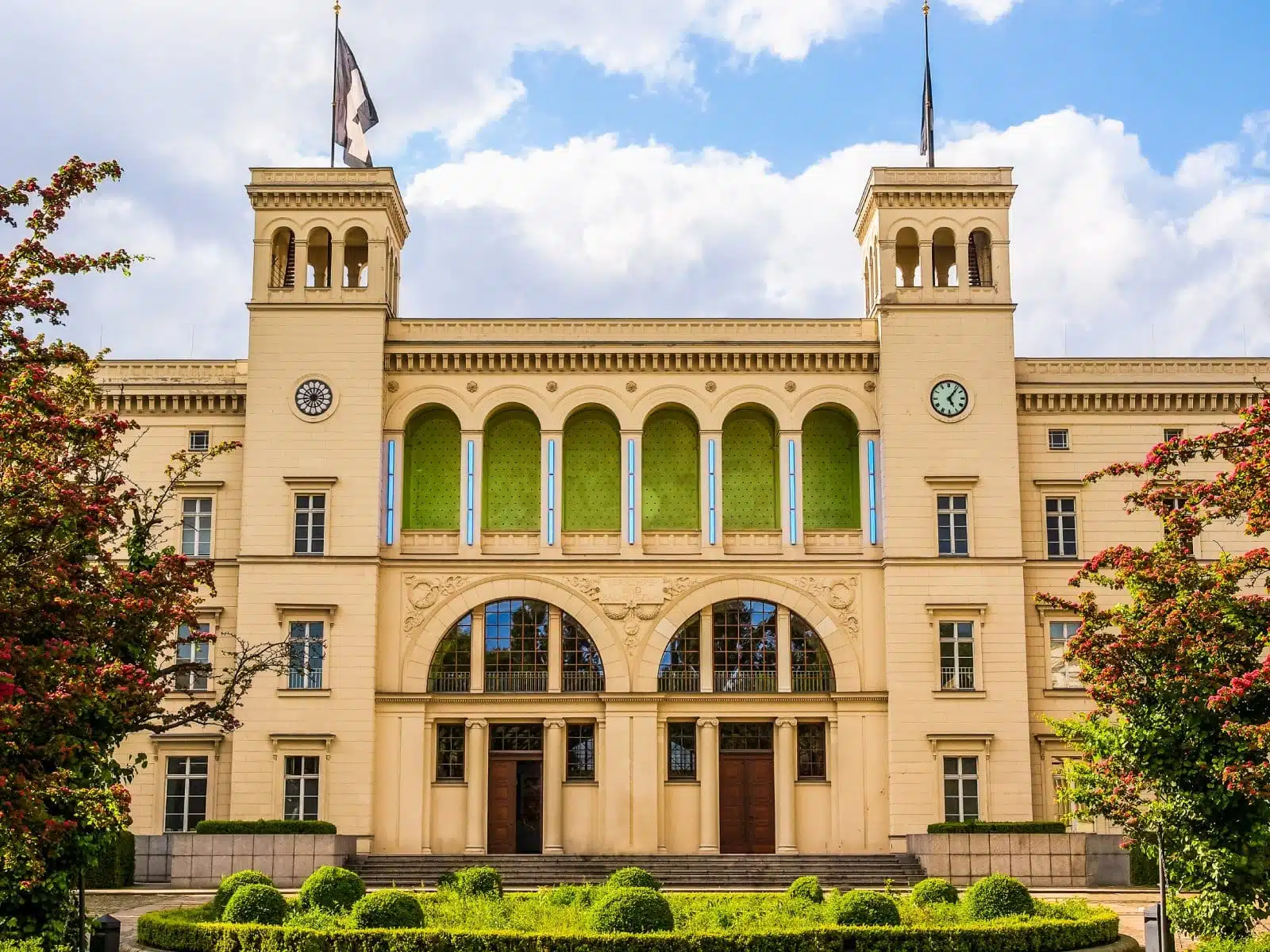
Image Credit: Shutterstock / Claudio Divizia
Berlin’s contemporary art scene is as dynamic and diverse as the city itself, with numerous galleries, art spaces, and studios spread across districts like Mitte, Kreuzberg, and Neukölln. The city hosts a vibrant community of artists, curators, and collectors, making it a hotbed for European contemporary art. Key venues include the Hamburger Bahnhof, a former railway station turned museum for contemporary art, and the Berlinische Galerie, which focuses on art from Berlin. The city’s art scene is also characterized by its grassroots initiatives, with artist-run spaces and temporary exhibitions in abandoned buildings offering an alternative to the traditional gallery model.
Insider’s Tip: Explore the gallery scene during Berlin Art Week in September, when the city comes alive with openings, fairs, and special events, offering a comprehensive snapshot of Berlin’s art world.
When to Travel: While Berlin’s art venues operate year-round, visiting during major events like Berlin Art Week or the Gallery Weekend in spring provides a more immersive experience.
How to Get There: Berlin’s art venues are spread across the city but are generally well-connected by public transport. The U-Bahn, S-Bahn, and bus networks can be used to navigate between galleries and museums efficiently.
4. Museum Island
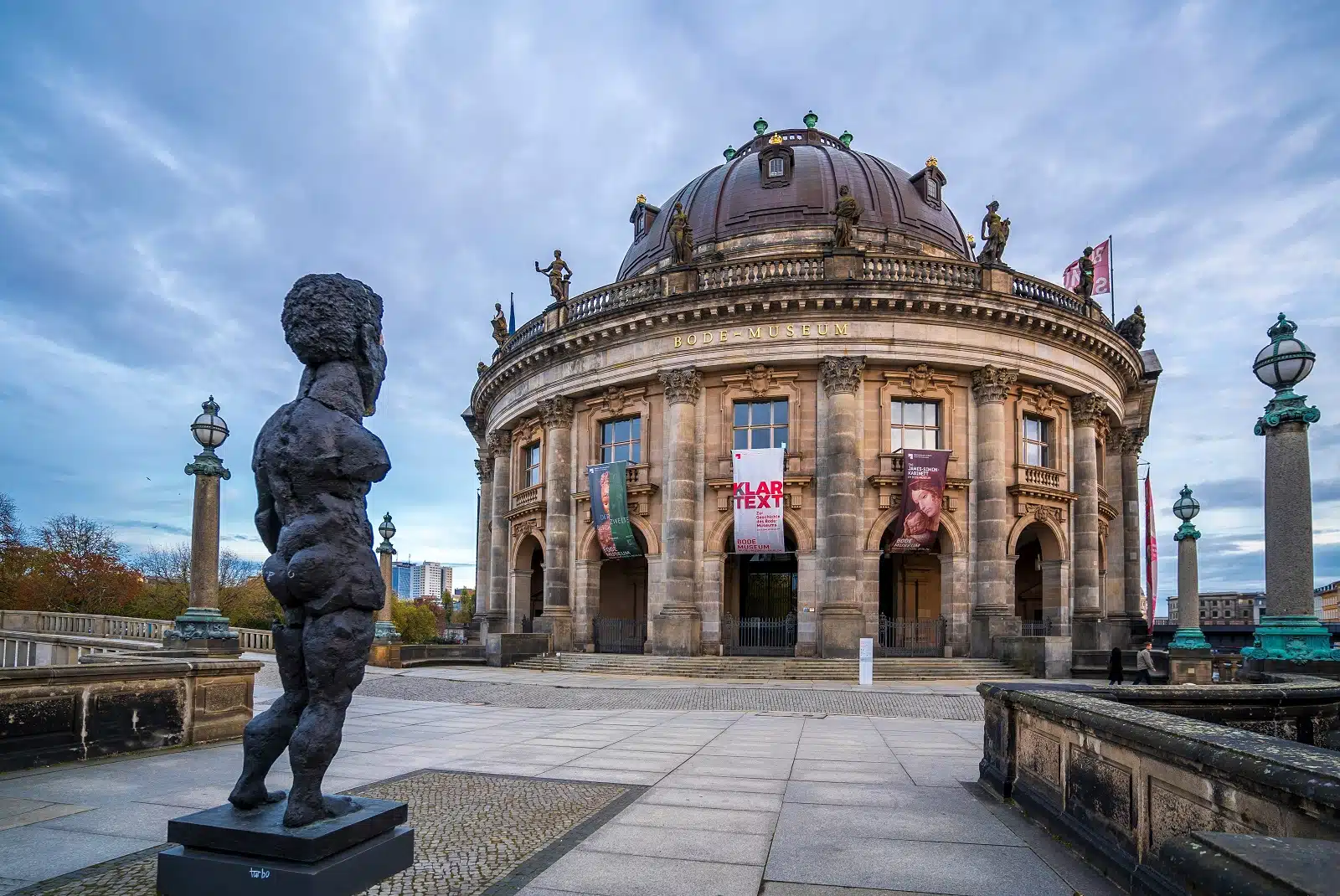
Image Credit: Shutterstock / Nejdet Duzen
Museum Island (Museumsinsel) is a UNESCO World Heritage site located on the Spree River in the heart of Berlin. This unique ensemble of five museums – the Pergamon Museum, the Bode Museum, the Neues Museum, the Alte Nationalgalerie, and the Altes Museum – houses collections spanning 6,000 years of human history, from ancient civilizations to 19th-century art. The Pergamon Museum, in particular, is famed for its reconstructed monumental buildings, such as the Pergamon Altar and the Ishtar Gate of Babylon. Museum Island highlights the diversity of human culture and Berlin’s commitment to preserving and showcasing this heritage.
Insider’s Tip: Purchase a Museum Island day pass to access all five museums at a reduced rate. Consider visiting during weekday mornings to avoid crowds.
When to Travel: Museum Island is accessible year-round, but the best time to visit is during the shoulder seasons of spring and fall when Berlin enjoys mild weather and fewer tourists.
How to Get There: Museum Island is centrally located and easily accessible by public transport. The nearest stations are Friedrichstraße (S-Bahn and U-Bahn) and Hackescher Markt (S-Bahn), from where it’s a short walk to the museums.
5. The Reichstag Building
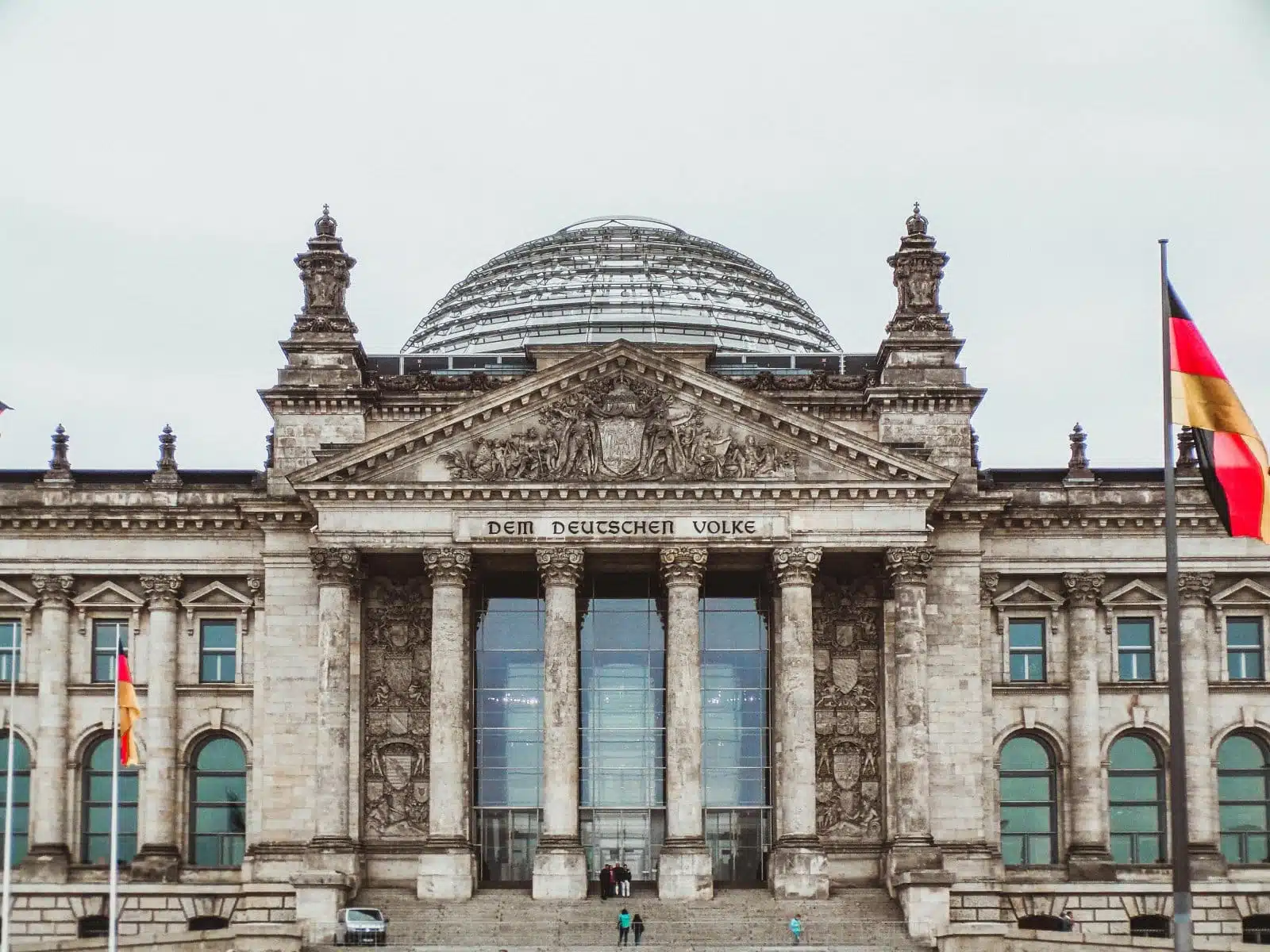
Image Credit: Pexels / Niki Nagy
The Reichstag Building, with its iconic glass dome designed by architect Norman Foster, serves as the seat of the German parliament (Bundestag) and symbolizes Germany’s tumultuous history and its commitment to transparency and democracy. Visitors can tour the building and dome to gain insights into German political history, enjoy panoramic views of Berlin, and observe parliament in session. The blend of the Reichstag’s historical architecture with modern elements reflects Berlin’s broader narrative of reconciliation and renewal.
Insider’s Tip: Advance registration is required for dome visits. Booking early is advisable as slots fill up quickly, especially during peak tourist seasons.
When to Travel: The Reichstag Building can be visited throughout the year. Evening visits offer the chance to see Berlin’s cityscape illuminated against the night sky.
How to Get There: Located in the government district, the Reichstag is accessible via the Brandenburger Tor U-Bahn station. It’s also within walking distance from other major sites like the Brandenburg Gate.
6. Berliner Philharmonie

Image Credit: Shutterstock / posztos
The Berliner Philharmonie, home to the Berlin Philharmonic Orchestra, is celebrated for its exceptional acoustics and distinctive architecture. Designed by Hans Scharoun, the concert hall is a masterpiece of modernist design, with its bright yellow facade and tent-like structure. The Philharmonie hosts performances by one of the world’s leading orchestras and serves as a cultural hub for classical music enthusiasts. Attending a concert here is an opportunity to experience the vibrancy of Berlin’s classical music scene in a venue that has hosted many of history’s greatest conductors and soloists.
Insider’s Tip: For those on a budget or unable to secure tickets for a full concert, the Berlin Philharmonic offers free lunchtime concerts on select Tuesdays. Arrive early to secure a spot.
When to Travel: The concert season runs from September to June, offering various performances. Summer visitors can enjoy open-air concerts and special events.
How to Get There: The Berliner Philharmonie is located in the Kulturforum, near Potsdamer Platz, and is accessible by U-Bahn (Potsdamer Platz station) and S-Bahn (Potsdamer Platz or Tiergarten stations).
7. Tiergarten Park
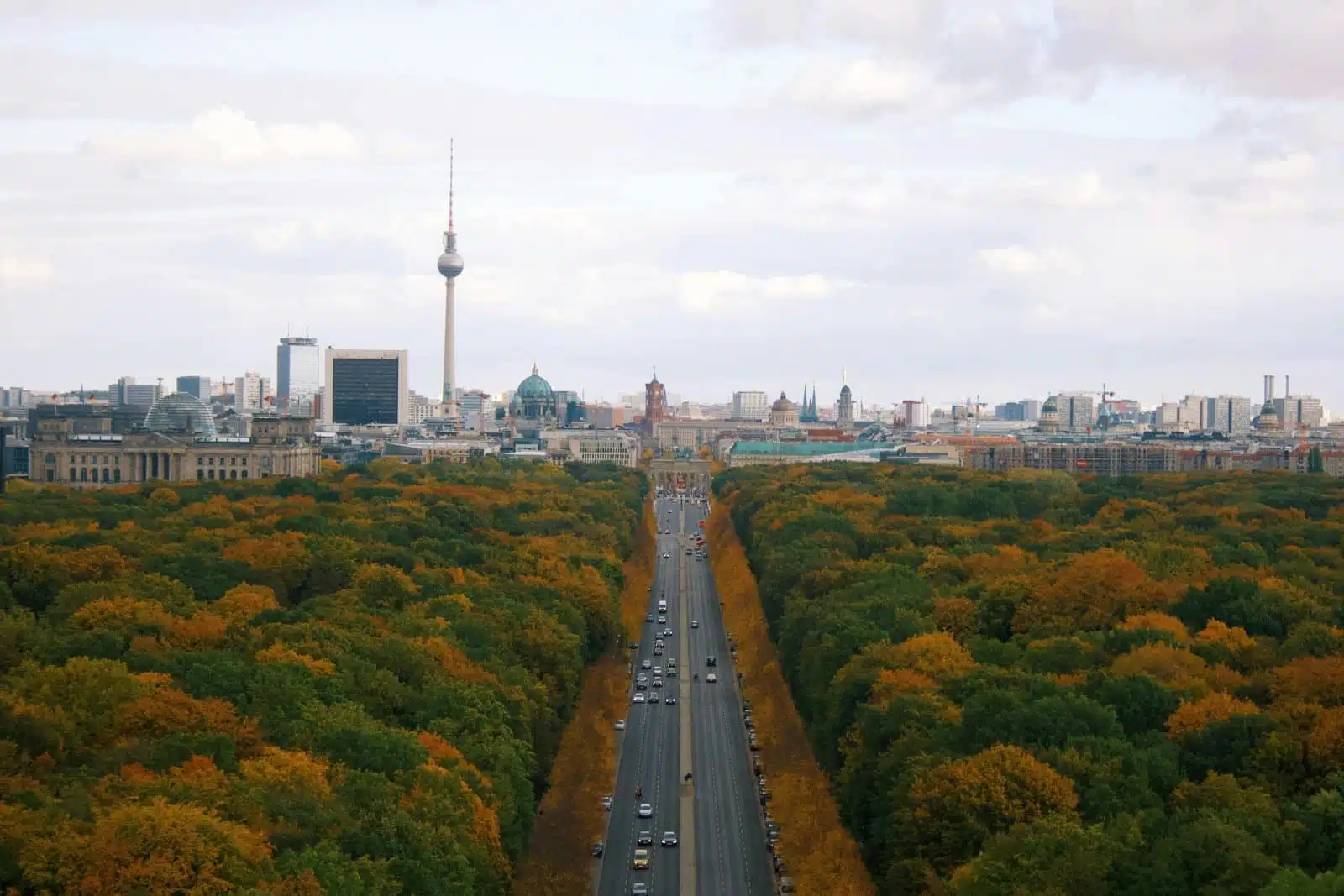
Image Credit: Pexels / Viviana Ceballos
Tiergarten Park, Berlin’s largest and oldest public park, offers a green oasis in the city’s center. Originally a hunting ground for Prussian royalty, the park has evolved into a sprawling urban retreat with walking paths, lakes, and landscaped gardens. The park also has several memorials, including the Soviet War Memorial and landmarks like the Bellevue Palace. Tiergarten Park provides a peaceful respite from the urban hustle and bustle, whether for a leisurely stroll, a picnic, or simply to enjoy nature.
Insider’s Tip: Rent a bike to explore the extensive paths throughout the park, allowing you to cover more ground and discover hidden gems like the English Garden and the Rose Garden.
When to Travel: Tiergarten Park is beautiful year-round, but it’s particularly stunning in the fall when the foliage turns vibrant shades of red and gold and in the spring when flowers bloom.
How to Get There: Tiergarten Park is centrally located and easily accessible from various parts of Berlin. The closest public transport stops are Tiergarten S-Bahn and Zoologischer Garten U-Bahn and S-Bahn stations.
8. Memorial to the Murdered Jews of Europe
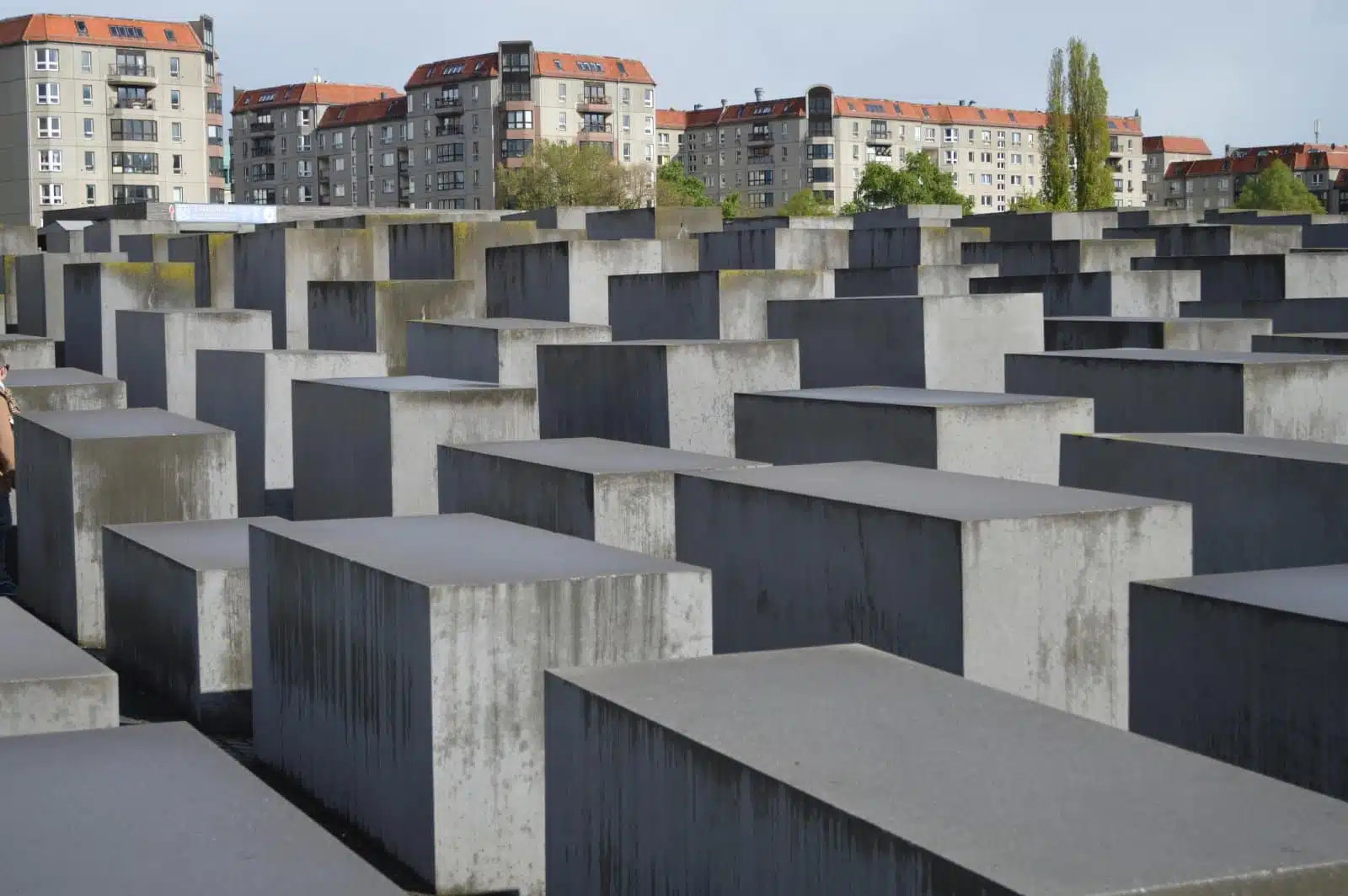
Image Credit: Pexels / Patricia Kitzmann
The Memorial to the Murdered Jews of Europe, also known as the Holocaust Memorial, is a poignant site located near the Brandenburg Gate. Designed by architect Peter Eisenman, the memorial consists of 2,711 concrete slabs (stelae) arranged in a grid pattern on a sloping field, creating an unsettling, maze-like experience for visitors. The underground Information Centre complements the outdoor memorial, providing personal testimonies, photographs, and letters that document the lives and fates of the victims. This memorial serves as a powerful reminder of the atrocities of the Holocaust and is a must-visit for those looking to understand Berlin’s commitment to remembering its past.
Insider’s Tip: Take time to visit the Information Centre beneath the field of stelae for a deeper understanding of the historical context and personal stories behind the Holocaust.
When to Travel: The memorial is accessible year-round, but visiting in the quieter months of early spring or late fall can offer a more reflective experience.
How to Get There: The memorial is centrally located and easily reached on foot from the Brandenburg Gate or by public transport, with the Brandenburger Tor station being the nearest U-Bahn and S-Bahn stop.
9. Berlin Cathedral
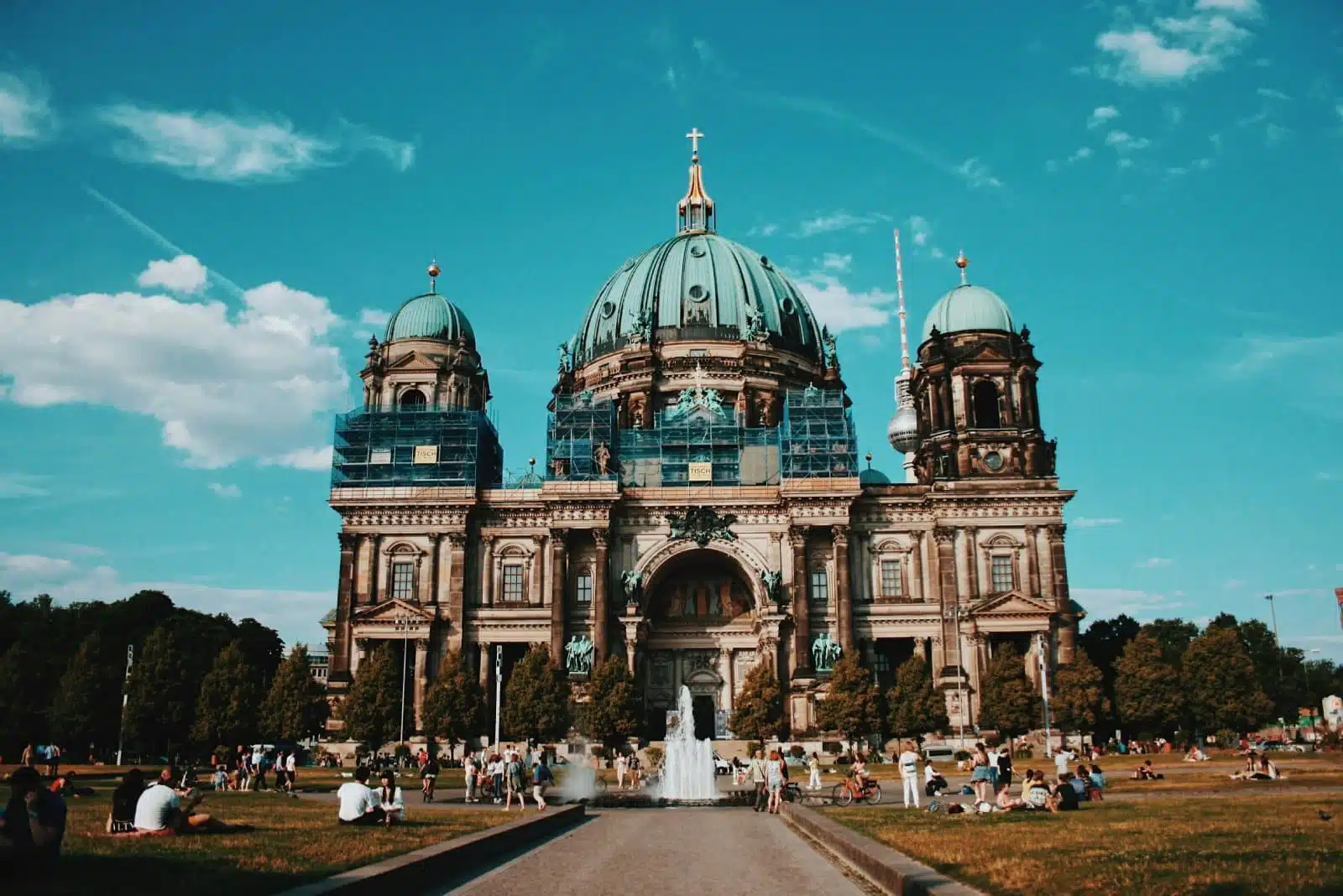
Image Credit: Pexels / Viviana Ceballos
Berlin Cathedral (Berliner Dom), with its magnificent dome and elaborate facade, stands as a testament to the city’s imperial history and architectural grandeur. Located on Museum Island, the cathedral is a place of worship and a key historical site, offering visitors insights into Berlin’s past through its royal tombs, ornate decorations, and impressive organ. Climbing to the dome provides panoramic views of the surrounding cityscape, including the Spree River and the nearby museums. The cathedral’s interior and exterior details, from the mosaics to the sculptures, reflect the artistic and cultural aspirations of the era in which it was built.
Insider’s Tip: Attend one of the cathedral’s organ concerts for an unforgettable auditory experience that showcases the acoustics and grandeur of this historic building.
When to Travel: Berlin Cathedral can be visited throughout the year, with each season offering a different perspective on its beauty. Summer provides longer daylight hours for exploring, while winter highlights the cathedral’s serene atmosphere.
How to Get There: Situated on Museum Island, the cathedral is accessible via the Alexanderplatz U-Bahn and S-Bahn stations, with a short walk leading to the site.
10. Tempelhof Field
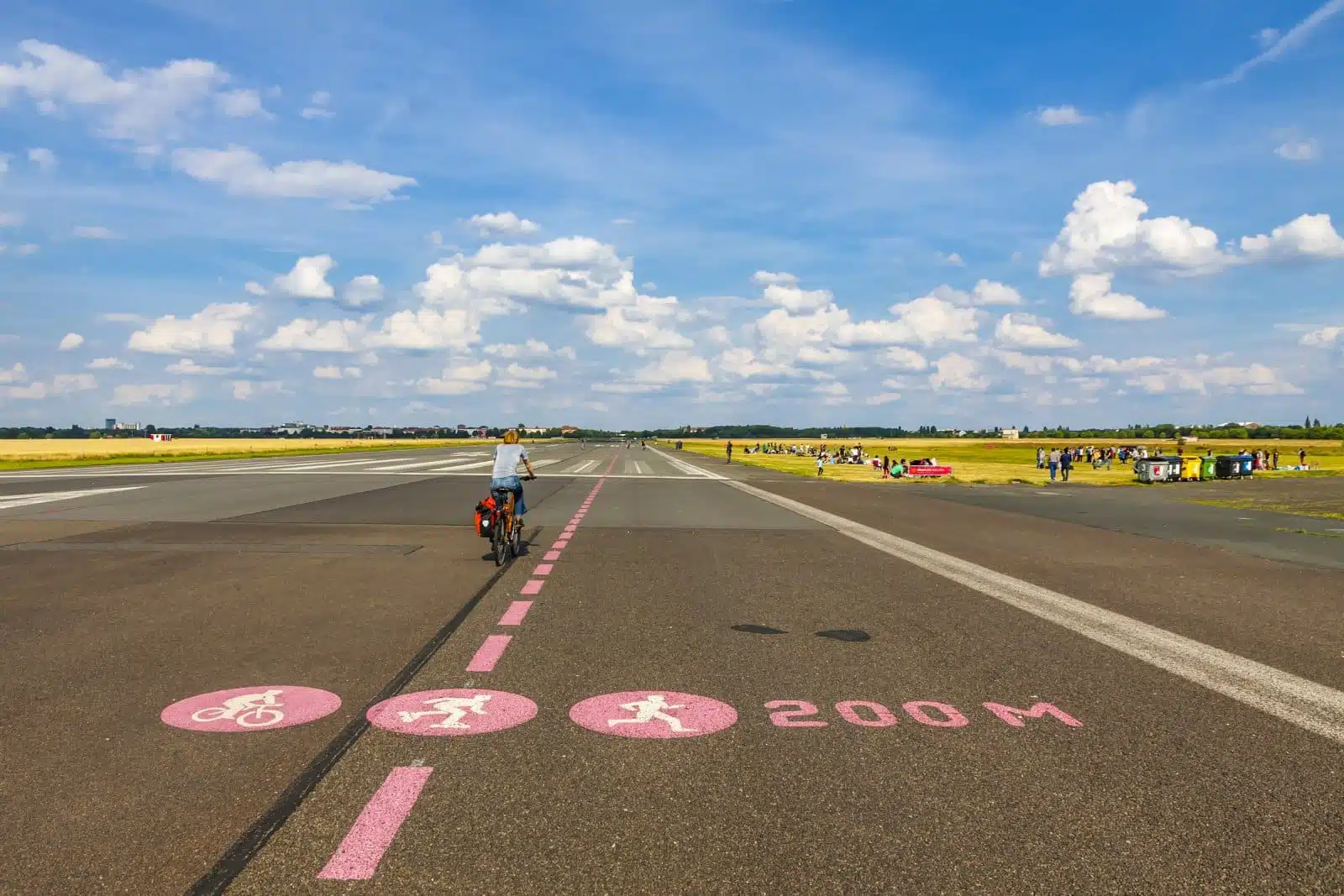
Image Credit: Shutterstock / katatonia82
Tempelhof Field, the former Tempelhof Airport, has been transformed into one of Berlin’s largest and most unique public parks. This vast green space offers various recreational activities, from kite flying and picnicking to cycling and jogging on the old runways. The history of Tempelhof is equally fascinating, having played key roles in early aviation, Nazi architecture, and the Berlin Airlift during the Cold War. Today, the site symbolizes Berlin’s innovative reuse of space, providing a communal area for leisure and cultural events while preserving its historical significance.
Insider’s Tip: Join a guided tour of the airport buildings to explore Tempelhof’s architectural and historical layers, including inaccessible areas.
When to Travel: Spring to early fall is the best time to enjoy Tempelhof Field’s outdoor activities, thanks to milder weather and longer daylight hours.
How to Get There: U-Bahn easily reaches Tempelhof, with Tempelhof and Paradestraße stations located nearby. Several bus lines also serve the area, making it accessible from different parts of the city.
11. The Berlin Zoological Garden
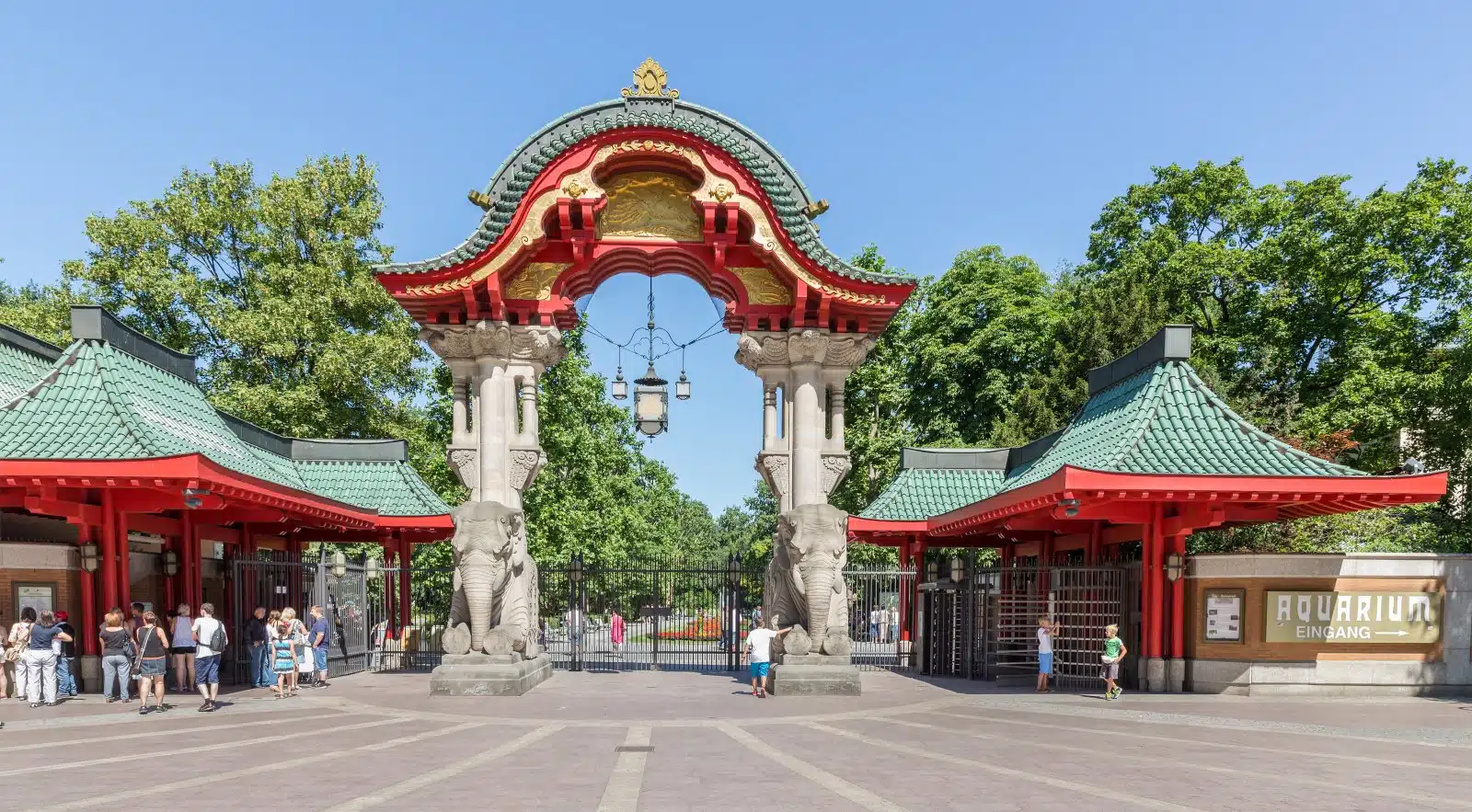
Image Credit: Shutterstock / T.W. van Urk
The Berlin Zoological Garden, located in the city’s Tiergarten district, is Germany’s oldest zoo and boasts one of the world’s most diverse collections of species. Established in 1844, it has since become a beloved institution for locals and visitors, offering a glimpse into the animal kingdom with over 1,200 species housed in carefully designed habitats. The zoo is particularly noted for its success in breeding endangered species, its expansive aviary, and the Panda Garden, home to giant pandas—a symbol of diplomatic friendship between Germany and China. The adjacent Aquarium Berlin, one of the largest in Europe, provides an immersive experience of aquatic life, from tropical reefs to Arctic seas.
Insider’s Tip: Plan your visit around feeding times or scheduled animal talks to enhance your experience with educational insights and the chance to see the animals at their most active.
When to Travel: The zoo is open year-round, but visiting in the spring or early autumn offers pleasant weather for exploring the outdoor enclosures and enjoying the zoo’s landscaped gardens.
How to Get There: Easily accessible by public transport, the zoo is located near the Zoologischer Garten train station, a major hub for U-Bahn, S-Bahn, and buses, making reaching anywhere in Berlin convenient.
12. Gendarmenmarkt
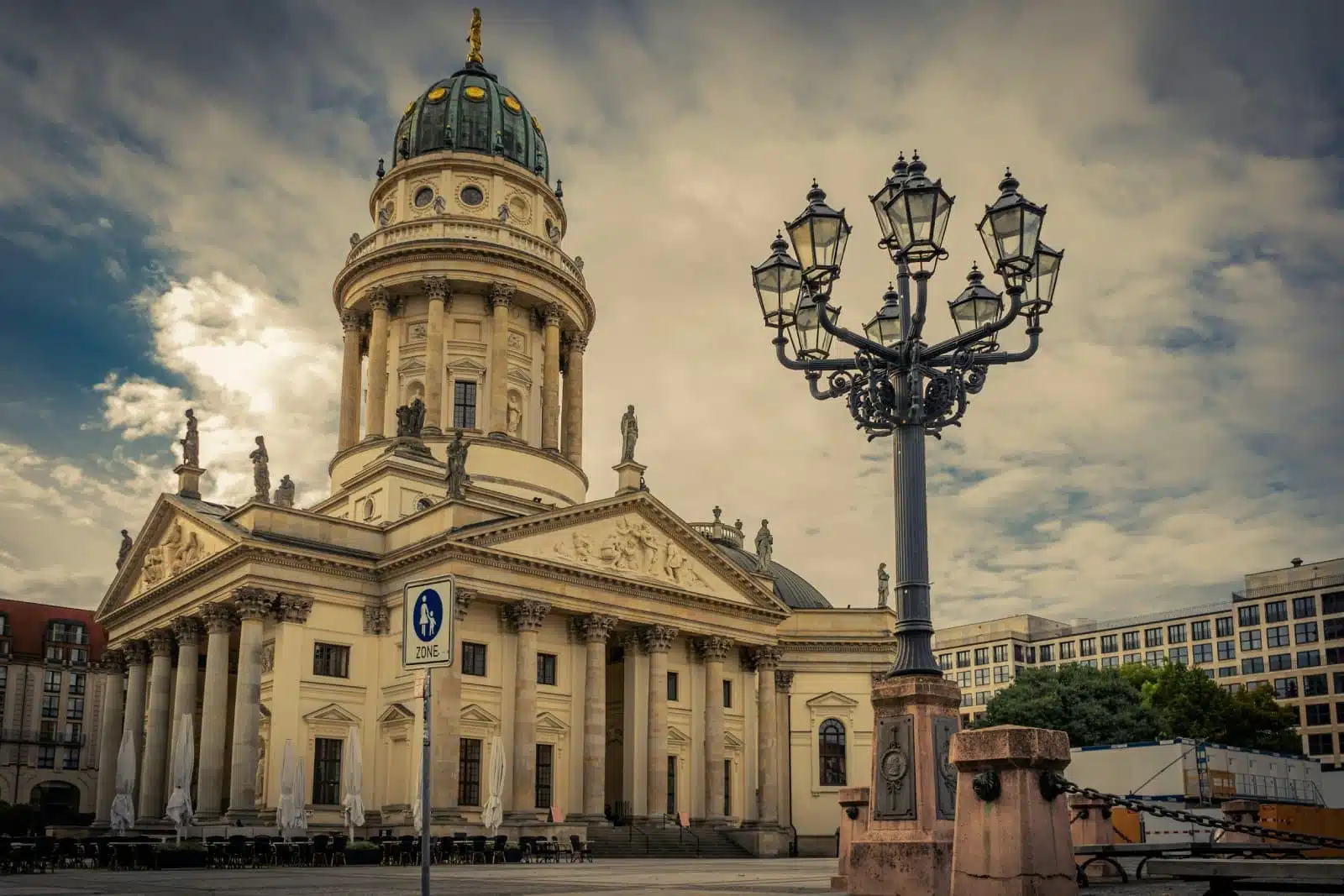
Image Credit: Pexels / Allan Feitor
One of Berlin’s most beautiful squares, Gendarmenmarkt is framed by three architectural masterpieces: the Konzerthaus (Concert Hall) and the French and German Cathedrals. This historic square, dating back to the 17th century, has played a significant role in Berlin’s cultural and social life. Today, it hosts various events throughout the year, including classical concerts at the Konzerthaus and one of Berlin’s most charming Christmas markets. The harmonious blend of classical architecture with lively cultural activities makes Gendarmenmarkt a must-visit destination for those seeking to experience Berlin’s elegance and historical depth.
Insider’s Tip: Visit Gendarmenmarkt in the evening when the buildings are beautifully illuminated, offering a magical view of the square and a romantic atmosphere.
When to Travel: While Gendarmenmarkt is stunning year-round, the Christmas season transforms the square into a festive wonderland, making it an especially enchanting time to visit.
How to Get There: Located in the Mitte district, Gendarmenmarkt is within walking distance from major attractions and easily reachable by U-Bahn, with the closest station being Stadtmitte.
13. The Spree River and its River Cruises
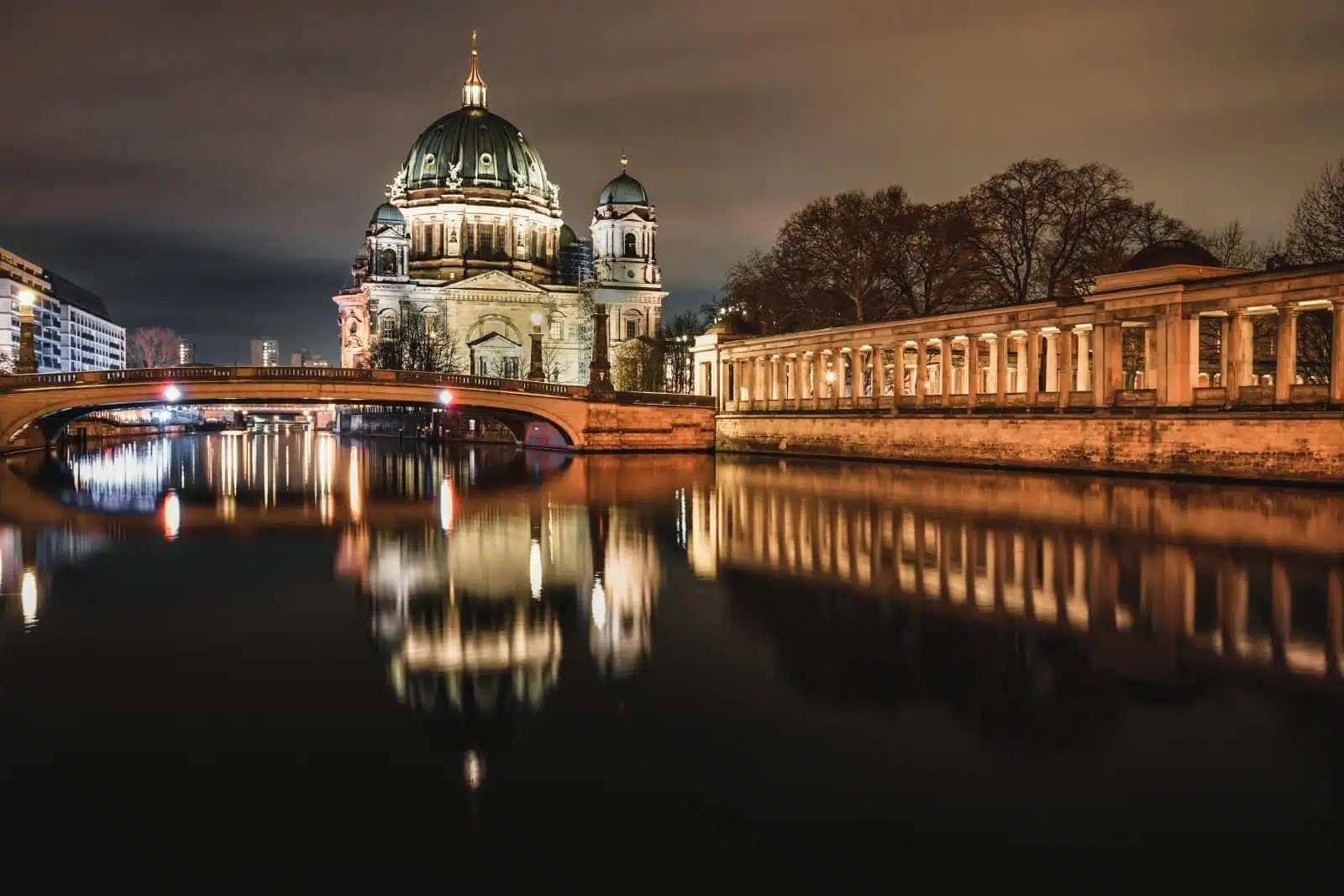
Image Credit: Pexels / Mhajr Invincible
The Spree River winds its way through Berlin, offering a unique perspective on the city’s landmarks and history from the water. A river cruise on the Spree is an excellent way to relax and take in sights such as the Reichstag Building, Museum Island, and the modern government district. Various tour operators offer different types of cruises, ranging from short city tours to longer excursions that explore the river’s surroundings. An evening cruise can be delightful, as the city lights reflect on the water, creating a picturesque scene.
Insider’s Tip: Opt for a cruise that includes live commentary to gain insights into Berlin’s history and landmarks as you pass them by.
When to Travel: River cruises are most enjoyable from late spring to early autumn when the weather is warm and the city’s life extends to the outdoors.
How to Get There: Cruise departures vary, but many start from central locations near the Friedrichstraße station or the Berlin Cathedral, both accessible by public transport.
14. Charlottenburg Palace
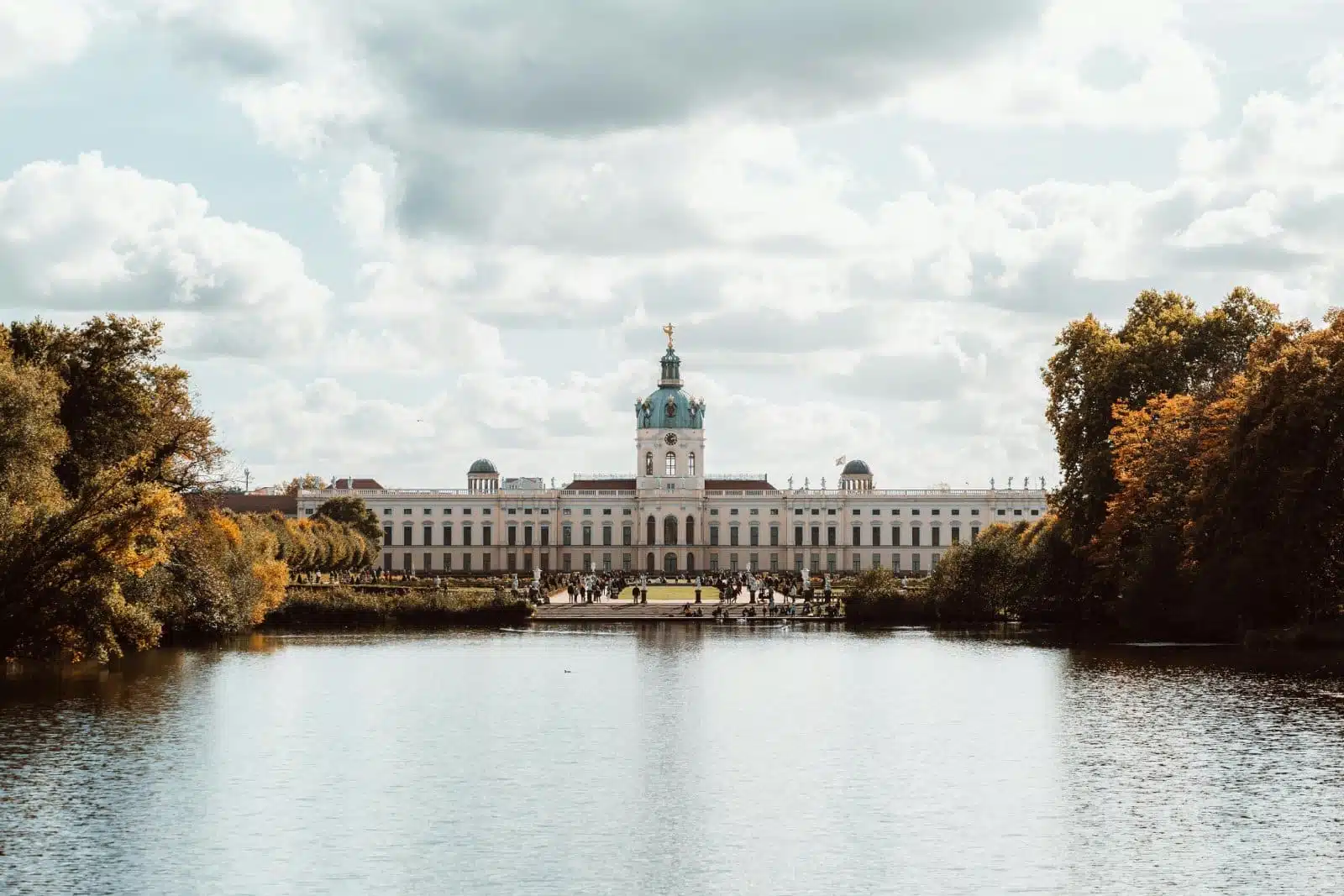
Image Credit: Pexels / Sebastian Luna
Charlottenburg Palace, the largest palace in Berlin, offers a glimpse into the city’s Prussian heritage. Built at the end of the 17th century and expanded over the years, the palace and its beautifully landscaped gardens are a testament to the grandeur of the Prussian kings. The palace’s richly decorated interior, featuring baroque and rococo styles, houses an impressive art collection, porcelain, and historical artifacts. Inspired by the Gardens of Versailles, the palace gardens provide a serene escape with their manicured lawns, sculptures, and water features.
Insider’s Tip: Don’t miss the New Pavilion, a smaller palace within the gardens, which showcases the neoclassical tastes of King Frederick William III and Queen Louise.
When to Travel: The palace and gardens are beautiful throughout the year, but they are particularly stunning in the spring when the gardens are in bloom and in the summer when the full splendor of the palace’s architecture can be appreciated in the longer daylight hours.
How to Get There: Charlottenburg Palace is located in the Charlottenburg district and is accessible by public transport, with the closest stations being Sophie-Charlotte-Platz (U-Bahn) and Westend (S-Bahn).
15. Berlin’s Nightlife and Club Scene
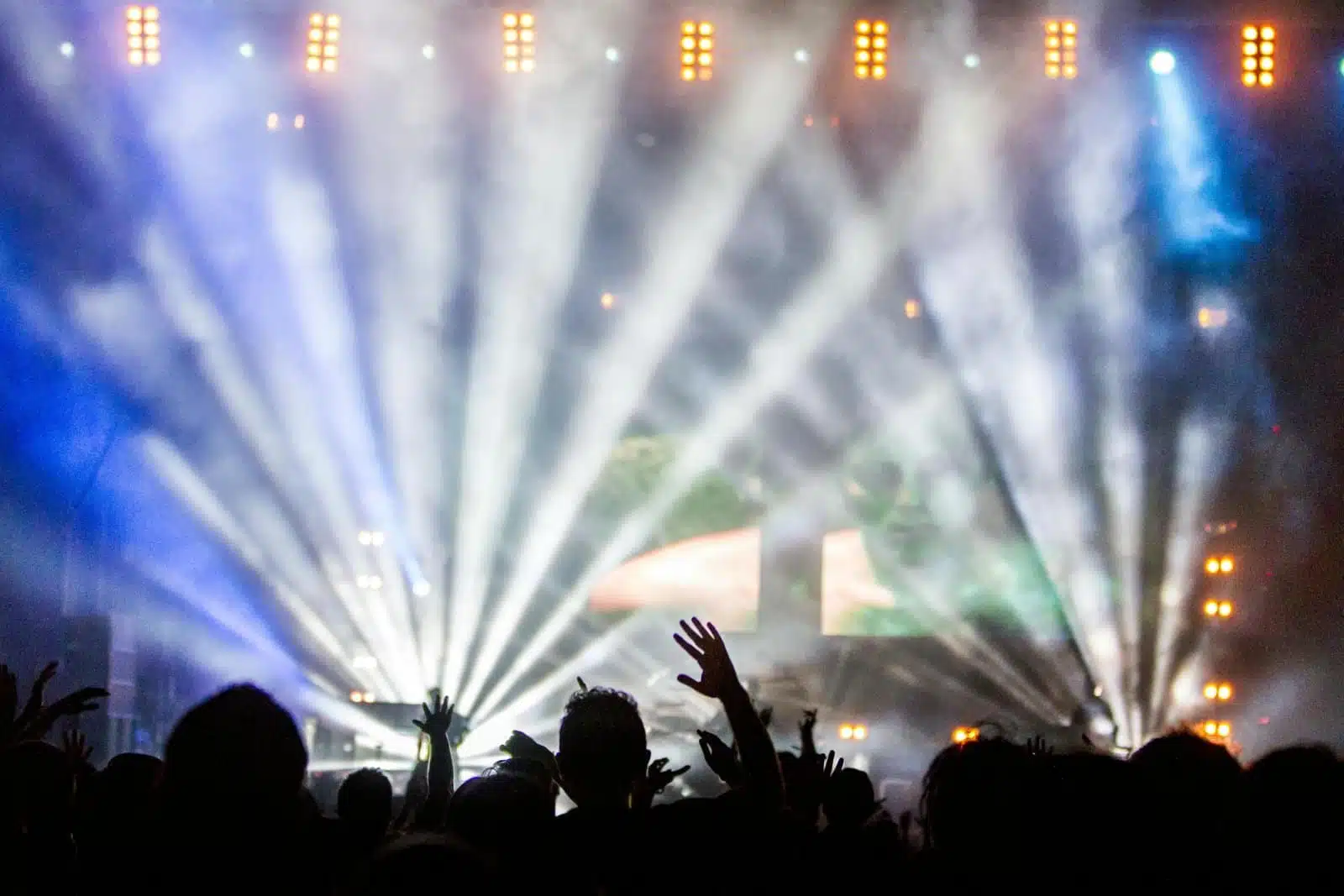
Image Credit: Pexels / daniel dinu
Berlin’s nightlife is legendary, with the city home to some of the world’s most famous clubs and bars. The club scene is diverse, ranging from techno temples like Berghain to more intimate venues that cater to every musical taste. Berlin’s clubs are known for their relaxed door policies, long opening hours, and an atmosphere encouraging freedom and self-expression. The city’s nightlife culture reflects Berlin’s open-minded and inclusive spirit, making it a must-experience for visitors looking to dance the night away.
Insider’s Tip: Many of Berlin’s clubs have strict no-photography policies to protect the privacy of their patrons and maintain the atmosphere. Be respectful of these rules to fully enjoy the experience.
When to Travel: Berlin’s clubs and bars are vibrant year-round, but the scene truly comes alive in the summer when outdoor venues and day parties add to the city’s energetic nightlife.
How to Get There: Berlin’s nightlife districts, such as Friedrichshain, Kreuzberg, and Mitte, are well-served by public transport, making navigating between clubs and bars easy.
The Bottom Line
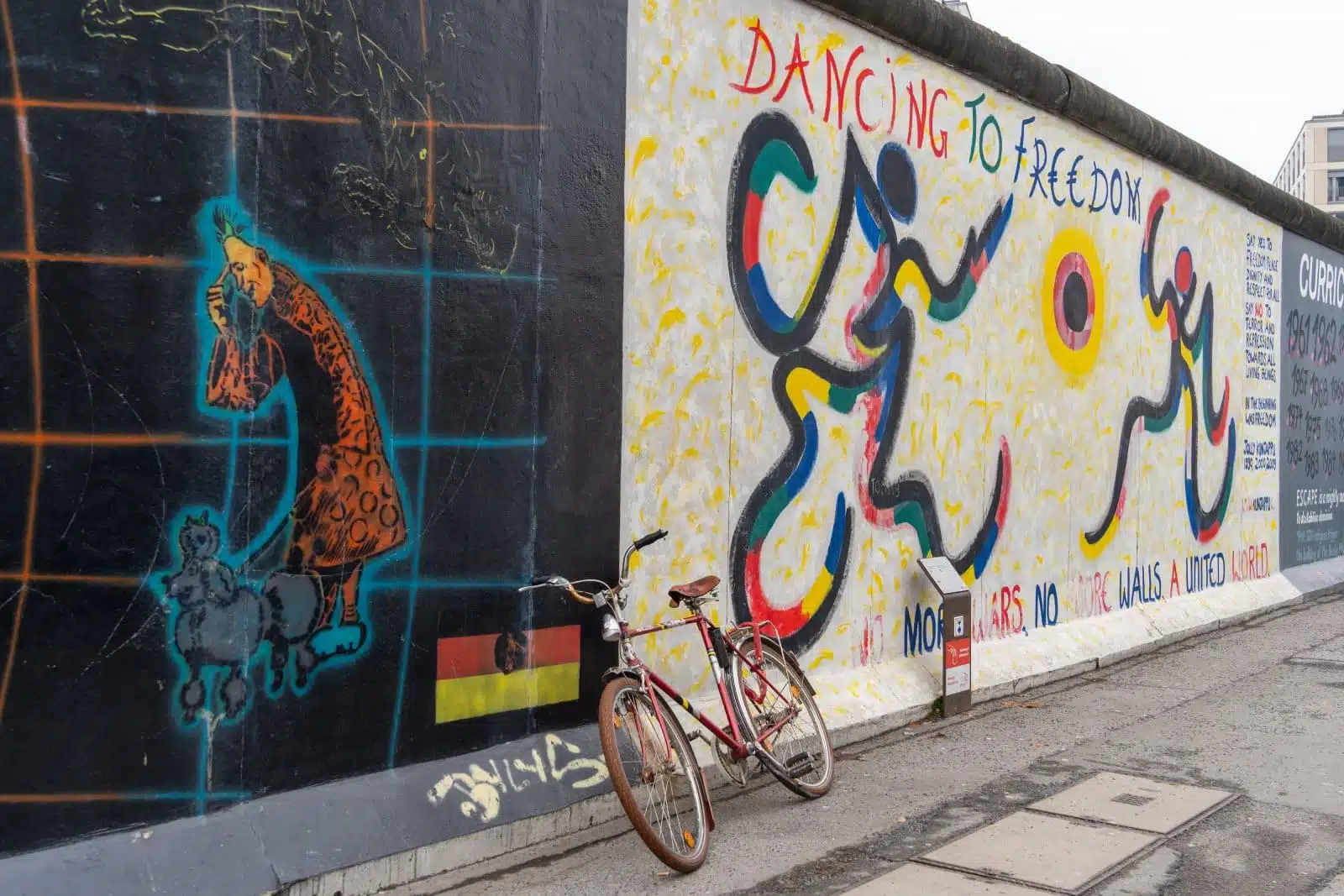
Image Credit: Shutterstock / Hazel Plater
Berlin’s rich history, culture, and modern vibrancy offers something for every traveler. From the remnants of its divided past to the thriving art and music scenes, the city invites exploration and reflection. Whether you’re standing before the Berlin Wall, wandering through Museum Island, or enjoying the greenery of Tiergarten Park, Berlin reveals its layers through each landmark and experience. As you navigate this city of contrasts, you’ll find historical significance and a living, breathing metropolis that continually looks forward while honoring its past.
More From The Green Voyage
Top 10 Trending Travel Destinations 2024
6 Essential Banking Apps for International Travel – Managing Your Finances on the Go
Traveling With Kids – 10 Tips to Create Memorable Family Holidays
The post A City Guide to Berlin, Germany first appeared on The Green Voyage.
Featured Image Credit: Shutterstock / frantic00.
For transparency, this content was partly developed with AI assistance and carefully curated by an experienced editor to be informative and ensure accuracy.
Tips for Trip Success
Book Your Flight
Find an inexpensive flight by using Kayak, a favorite of ours because it regularly returns less expensive flight options from a variety of airlines.
Book Your Hotel or Special Accommodation
We are big fans of Booking.com. We like their review system and photos. If we want to see more reviews and additional booking options, we go to Expedia.
You Need Travel Insurance!
Good travel insurance means having total peace of mind. Travel insurance protects you when your medical insurance often will not and better than what you get from your credit card. It will provide comprehensive coverage should you need medical treatment or return to the United States, compensation for trip interruption, baggage loss, and other situations.Find the Perfect Insurance Plan for Your Trip
